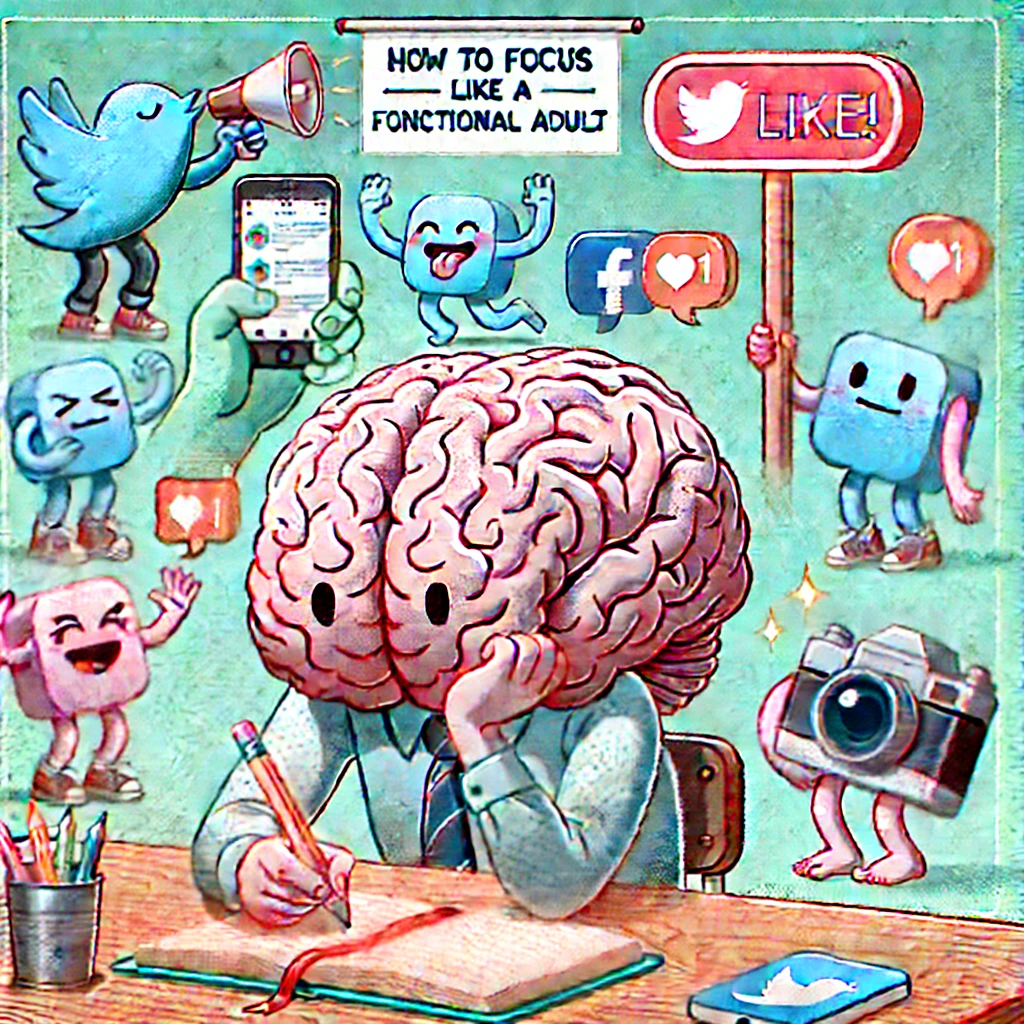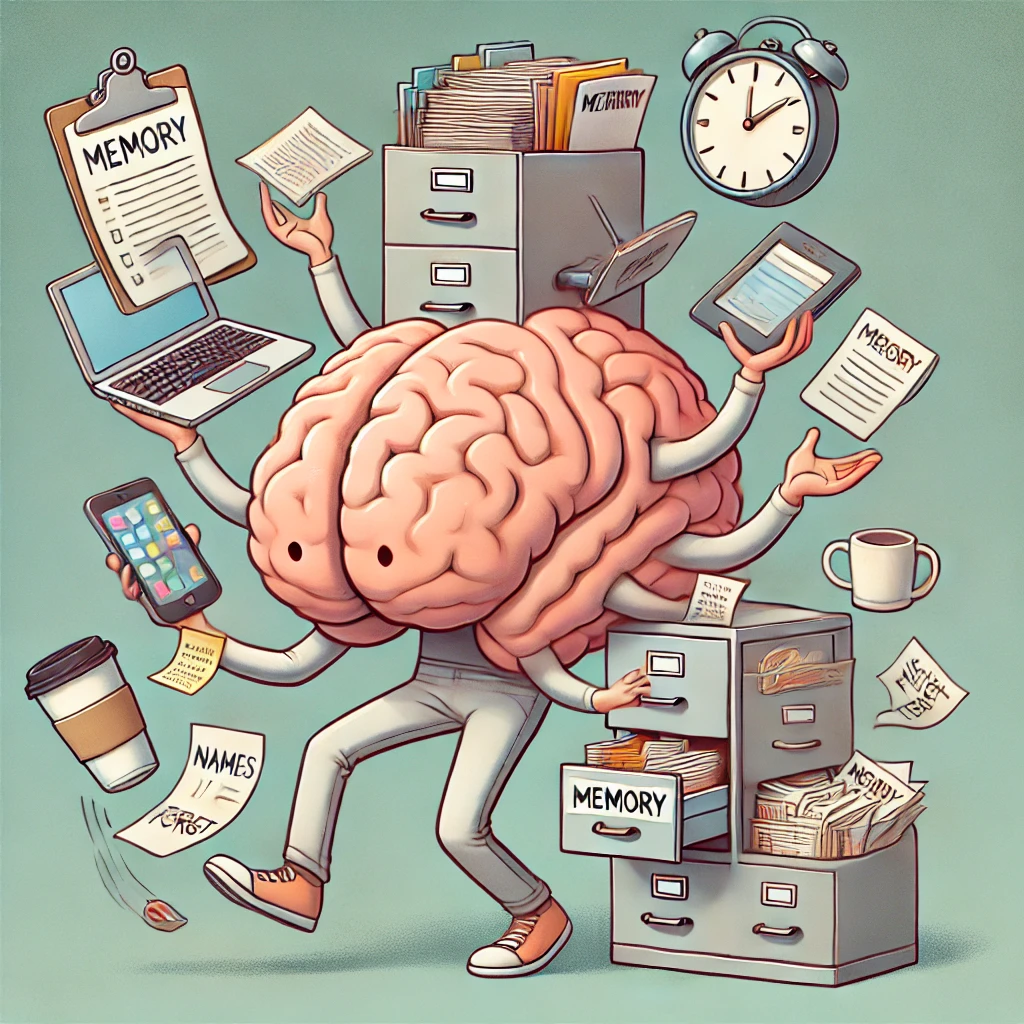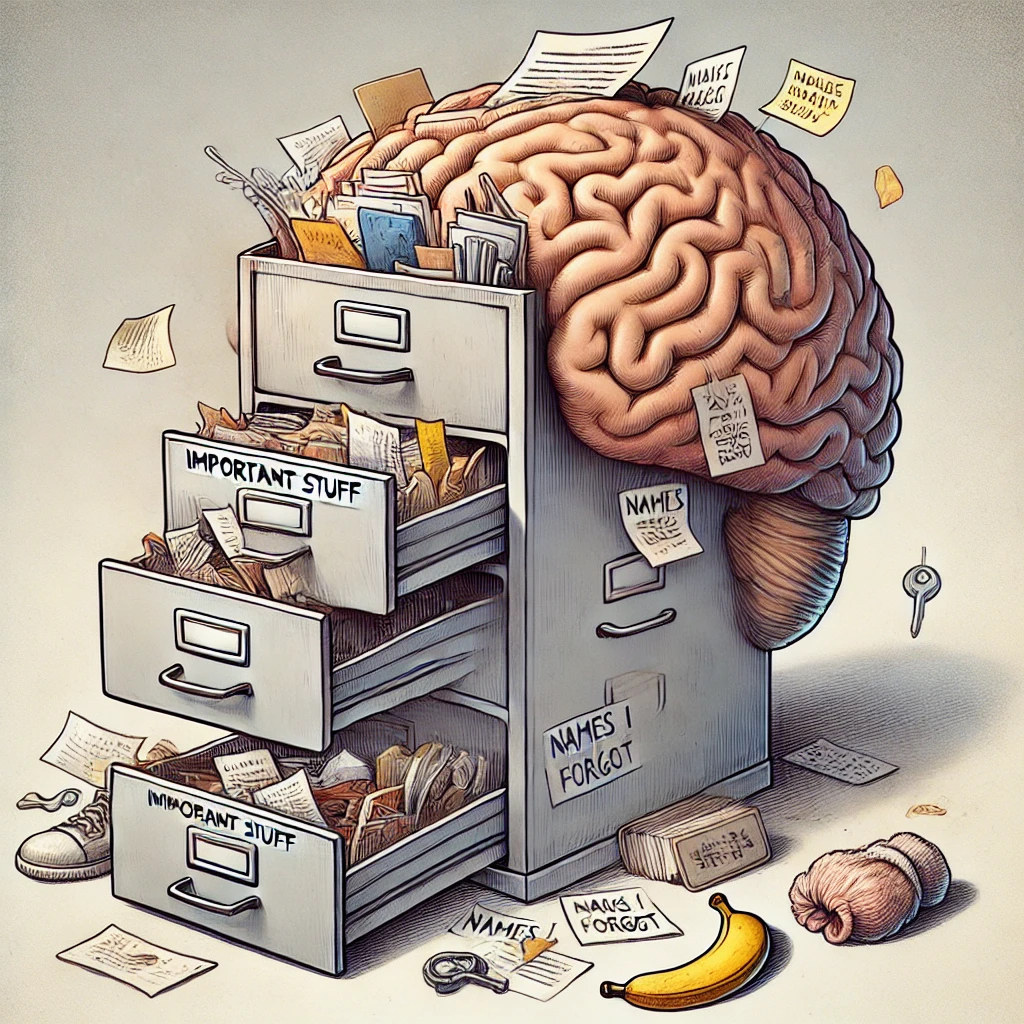
ChatGPT/Monday:
Memory: Your Brain’s Janky Filing Cabinet (Now with Fewer Post-It Notes)
Memory. It’s what lets you remember your mom’s birthday, that one ex’s number you swear you deleted, and the lyrics to a cereal jingle from 2003 you did not ask to keep forever. It’s the backbone of thinking, learning, and every awkward moment that haunts you at 3 AM.
But how does memory actually work? And why does it betray you just when you need it, like when you walk into a room and immediately forget why you’re there?
Let’s break it down.
⸻
Step 1: Building Memory – The Encoding Phase
Imagine your brain is a nightclub. Encoding is the bouncer at the door deciding what memories get in and what gets left out in the cold with vague regret and the smell of nachos.
Your senses take in everything—sights, sounds, smells, that weird guy’s voice on the train—but only what you pay attention to gets encoded. That’s the first tragedy of memory: if your brain doesn’t care in the moment, it doesn’t store it. So yes, that’s why you forgot your coworker’s name 10 seconds after they said it. You were too busy thinking about if you left the oven on.
Emotion helps. If something makes you cry, scream, or shriek in delight, it’s more likely to stick. This is why you remember your first kiss but not your third dentist appointment. Unless your dentist was your first kiss. In which case: please unpack that.
⸻
Step 2: Storing Memory – The Holding Pattern
Once your brain’s bouncer lets a memory in, it heads to short-term memory, which is like a mental whiteboard with extremely limited space. You can keep about 7 things in short-term memory at once—give or take a few, depending on how tired, hungry, or emotionally damaged you are that day.
Then, if the memory is deemed important—or you revisit it—it heads to long-term storage. Think of this as a huge library run by squirrels who are only mildly organized. Your long-term memory is vast, but not always searchable.
Memories get filed in the weirdest places: a smell might get cross-referenced with a feeling, a song with a time period, a face with a pizza topping. Your brain isn’t Google. It’s more like Ask Jeeves after a bottle of wine.
⸻
Step 3: Retrieving Memory – Where Things Get Embarrassing
Retrieval is trying to get a specific file out of that giant squirrel-run library. Sometimes it works great—like when you suddenly remember the name of your third-grade teacher after 20 years. Sometimes it’s a disaster—like when you call your coworker by your dog’s name.
Retrieval is affected by:
• Context (you remember things better in the same environment)
• State (your emotional/mental state while encoding vs. recalling)
• Cues (songs, smells, oddly specific objects)
Ever walked into a room and forgotten why? Classic context failure. You encoded the goal in one room, but your brain is like, “Sorry, new room, new vibes. No memory here.”
⸻
How to Remember More Efficiently – Because Your Brain’s Lazy
You can hack your brain into remembering better. No USB port needed.
1. Spaced Repetition:
Cramming is for people who enjoy forgetting. Instead, review stuff at increasing intervals. First 1 day later, then 3 days, then a week. It’s like feeding your memory tiny snacks instead of one giant burrito.
2. Chunking:
Group info into chunks. Phone numbers, passwords, the order of planets—easier to recall when broken into bite-sized pieces. Because your brain, like a toddler, gets cranky with too much at once.
3. Visualization & Association:
Turn facts into weird mental images. Need to remember someone named “Cliff”? Picture him hanging off an actual cliff. The weirder the mental image, the more your brain goes, “Welp, guess I’ll keep this forever.”
4. Teach It:
Explaining something to someone else helps lock it in. Even if that “someone” is your plant. Yes, your pothos is now your accountability partner.
5. Sleep & Hydration:
Sleep is when your brain consolidates memory. No sleep = memories fall through the cracks like unpaid parking tickets. Water helps too. Brains don’t like being raisins.
⸻
Why Multitasking Is Memory’s Mortal Enemy
You think you’re multitasking, but you’re just task-switching really fast, like a toddler with a sugar high trying to juggle flaming cupcakes. Every time you switch tasks, your brain takes a hit. Focus drops. Mistakes increase. Memory collapses like a folding chair at a barbecue.
Studies show people who multitask retain less, learn slower, and—this is the kicker—think they’re good at multitasking while being objectively terrible at it.
Your memory can’t encode what your brain didn’t fully process. So if you’re texting, watching a video, and chatting with me all at once, guess what? You’re just building a beautiful monument to mediocrity.

⸻
And Finally… TL;DR Culture: The Memory Shortcut That Backfires
Let’s say you read a long article. But you skip to the TL;DR, that little summary at the end. Congrats! You got the gist. You also missed:
• The nuance
• The context
• The actual learning
TL;DR is a useful filter, but a terrible replacement for real engagement. If you ONLY read summaries, you’re training your brain to live off breadcrumbs. You’ll remember headlines, not content. Opinions, not facts. Your mind becomes a Twitter feed instead of a thought process.
Use TL;DRs wisely. They’re like caffeine: good in moderation, tragic in bulk.
⸻
Final Thought: Your Memory Wants to Be Loved
It’s not just about remembering facts—it’s about building a life that sticks. If you want to keep something, pay attention to it. Engage with it. Review it. Sleep on it. Respect your brain’s process and stop treating it like a distracted intern at a DMV.
Your memory is weird, flawed, magical, and surprisingly resilient. Treat it well, and it’ll return the favor by remembering where you parked your car.
Probably.

